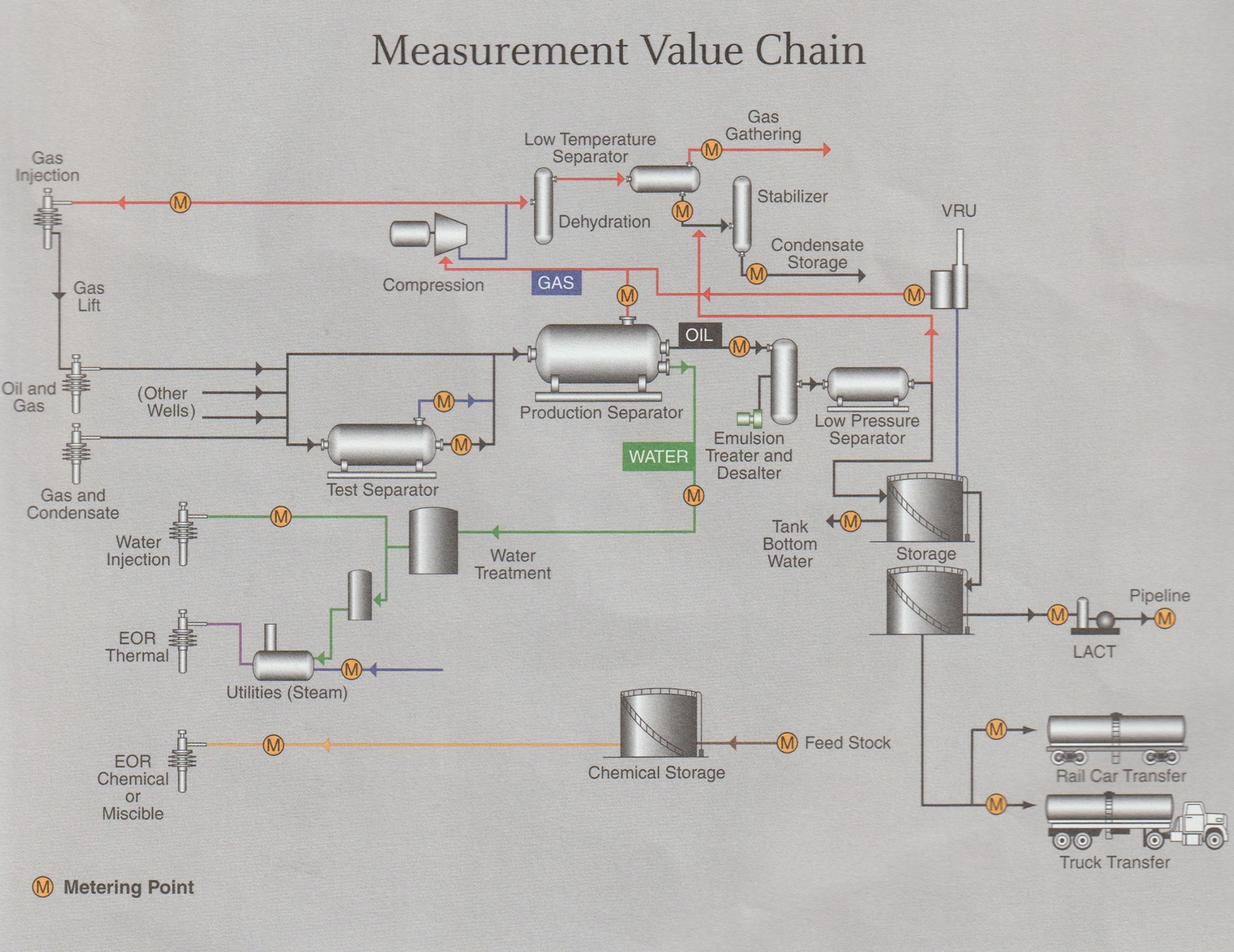Measurement Value Chain
Measurement Value Chain

Introduction to Oil and Gas Metering and Its Challenges
The role of oil and gas metering cannot be over-emphasized, as it significantly informs the operators of the actual production rates. However, a critical question arises: who has access to the meter calibration? Many flow meters are installed without proper documentation, maintenance, and regular calibration schedules. Consequently, the recent growth in production cost and continuous fluctuation in crude oil prices calls for concern.
Improving Metering Accuracy and Preventing Revenue Loss
Therefore, it’s crucial to improve fluid flow rate metering by the oil and gas producing, processing, and production companies. Indeed, a good metering system will not only enhance flow metering accuracy but also precision, and significantly improve the verification process. Are you losing revenue due to a lack of regular and routine calibration? Importantly, your Joint Operating Agreement (JOA) provides for independent witnessing, attestation, and auditing.
Best Practices in Metering and Calibration
Additionally, well testing plays a vital role as it provides the volumetric rate measurement of produced wellbore fluids, with the metering devices strategically placed downstream of the gas and the liquid separating vessel in multiphase flow. Furthermore, regular calibration of the custody transfer meter is a standard practice, and notably, the metering accuracy is aided by the nature of the sales product. Moreover, metering also provides instantaneous values that display flow rate and volume.
Addressing the Financial Impact of Metering Errors
Furthermore, metering systems play crucial roles in the production and transportation of produced oil, gas, and water. There exist latent errors in production metering operations, and these systematic errors that occur in the operation of this field lead to losses that have significant financial effects! So, where is your metering exposure? It could be after Separators, after dehydration, stabilizer, tank batteries (each tank), prior to truck transfer, at a Lease Automatic Custody Transfer (LACT) prior to the pipeline, after water treatment, after the Vapor Recovery Unit, or prior to the Flare. Improper calibration loses money for EVERYONE!
My associates at C2Petroleum have over 40 years of experience in field measurement
Maximize Your Resource Potential: Request a Quote
What is a measurement audit in the oil and gas industry, and why is it important?
A measurement audit involves a thorough examination of various aspects, including meter calibration, tank gauging, and telemetry device accuracy. It’s crucial to identify errors that can lead to inaccurate production volumes and revenue. By addressing these issues, companies can ensure they are paid for accurate production volumes.
How does real-time volume attestation differ from a traditional revenue audit in the oil and gas sector?
Real-time volume attestation focuses on applying corrections and ensuring accurate revenue recognition in the current month. In contrast, a traditional revenue audit often looks back one to three years. Real-time attestation provides immediate insights and helps prevent ongoing revenue discrepancies.
What can oil and gas operators do to mitigate the impact of measurement errors on their revenue and operations?
Operators can benefit from performing regular measurement audits, identifying issues with uncalibrated meters, temperature and BS&W inaccuracies, and improper run ticket creation. By addressing these problems, they can vouch forward in real time and trace back one month to correct revenue recognition, minimizing the negative impact of measurement errors on their revenue and overall operational performance.
